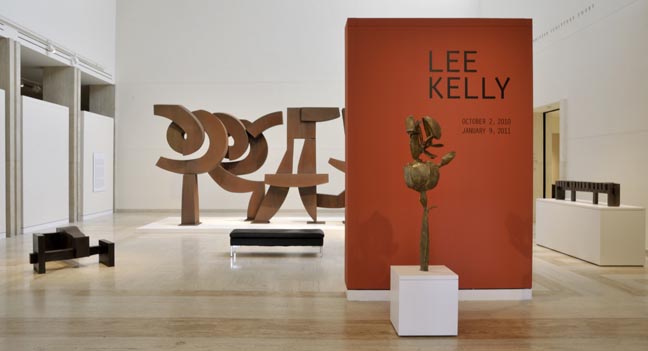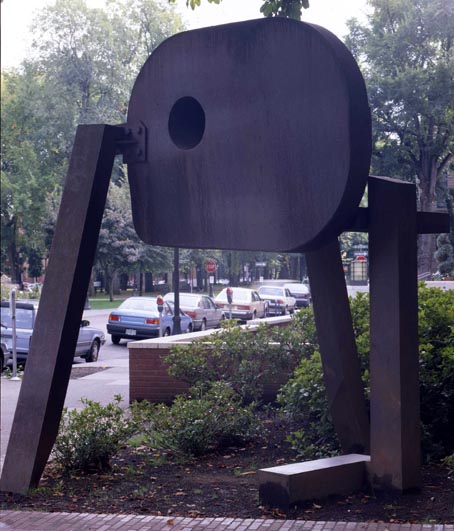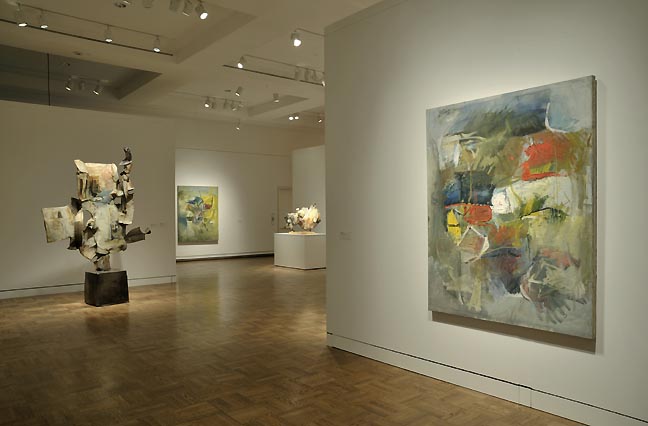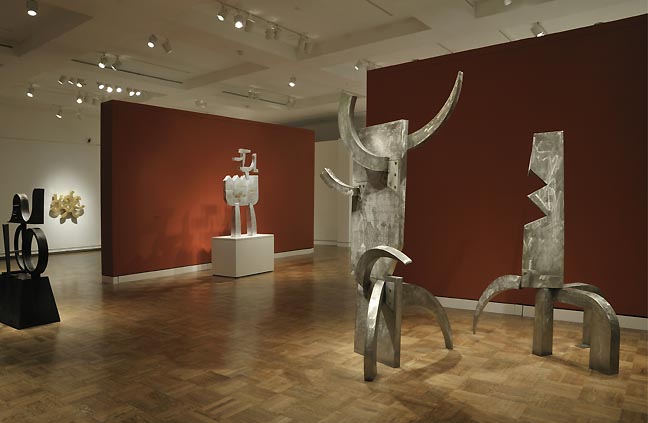
|
||
|
Portland art blog + news + exhibition reviews + galleries + contemporary northwest art
|
||
Lee Kelly Retrospective at Portland Art Museum
The inclusion of Kelly's larger scale sculpture Memory 99, as well as a video interview with Kelly on his life and process, strengthen the retrospective. They provide the viewer greater intimacy with the work of Kelly and a better understanding of its origins, in particular, pointing out the influences of his formative years in rural farmland. If one is familiar with Kelly they are likely to have seen one or more his public works, as they are scattered quite numerously across the greater Portland area. For those who haven't, however, Memory 99 is a wonderful example of Kelly's larger scale sculpture. Kelly's monumental sculpture would not be presentable inside the museum but through scale models and Memory 99 one gains a sense of the artists use of balance in gravity and movement through rhythm in his larger works. One could argue that Kelly is simply preserving the ignorance of western homogenization with sculptures like Leaving Kathmandu. Though there is merit in that argument, I saw these works as more of a personal response to a specific experience. It isn't as though Kelly claims the culture as his own with the piece, more that he lets the experience imprint his interpretations. He provides a space for thoughts to foster on the impact of history and architecture without assumptions of their significance within the culture of origin. Truly surprising is the prowess of Kelly's two dimensional work. In his oil paintings dark patches unfold upon sunlit canyons while spontaneously bursting into raw forms of line and color. I found myself quite drawn to these works as I saw bits of De Kooning and Egon Schiele in his gestural markings. They also distinctly resembled his earliest sculptures with their cactus like hedrons and boney stems. Kelly's explorations and influences as an painter clearly reverberate in his sculpture. His painterly mindset is evident in the recurrence of gesture in all periods of his career, as well as the rise in use of painted steel in its later stages. Even Kelly's more minimal notch and beam structures from the 70's and 80's have a sweeping movement about them referencing the torque of human touch. It is evident that Kelly's process has changed over his career. He began by welding reused material unaware of what the final result would be. Eventually preconceived shapes arose from sketches and notebooks dictating the direction of the work and ultimately resulting in Kelly's use of laser cut prefabrications. Still, the later sculptures abstain from rigidity through Kelly's process of placing, removing and replacing his prefabricated components. We find a return to his earlier expressionist attitudes in some of the most recent works such as The Professor and the Archbishop. Though these new colored sculptures of Kelly's don't quite carry the composure of earlier pieces, it is very exciting to see the 78 year old still experimenting and tackling problems in a new manner. Possibly Kelly's greatest quality is his sheer productivity. Since the 60's he has been one of the most hard working sculptors in the northwest taking on public projects across the country. Even after Kelly made a name for himself with monumental sculpture he continued to work diligently in the studio, resulting in an ever evolving practice. Kelly definitely hit a note with Cor-Ten steel sculpture making strong and balanced work for several decades. Like any great artist, however, Kelly has challenged himself by reviving ideas left behind and imbuing his newer pieces with them. Some works are more successful than others; I found his usage of written poetry far too gimmicky and distracting. The smaller colored steel wall sculptures do strike a nice balance between accident and execution while referencing his beginnings as an abstract expressionist.
One might easily come away from the show unimpressed, as at first I did myself. Kelly's work certainly isn't quick to catch one's attention with daring moves or flashy combinations, and there is undoubtedly a bit of a lull in the show with some of the more recent sculptures. Overall the work grew on me, however, especially those architectural/figurative forms from his mid career and several of the newer colored wall sculptures. I enjoy the interplay these have with his older expressionist forms of his paintings while retaining the brute balance of his architectural monuments. What makes Kelly successful is his resolve to discover something that is his own. He has stayed his course and developed a vocabulary that serves his purposes, which is no easy feat. His honesty and integrity bolster his choices of medium and subject matter nicely without hindering his unique approach to problem solving. There is a straight forward attitude in Kelly's work that shows us he isn't afraid to do what he loves no matter what people make of it. Posted by Jascha Owens on October 22, 2010 at 9:50 | Comments (0) Comments Post a comment Thanks for signing in, . Now you can comment. (sign out)
(If you haven't left a comment here before, you may need to be approved by
the site owner before your comment will appear. Until then, it won't appear
on the entry. Thanks for waiting.)
|
| s p o n s o r s |
 |
 |
 |
 |
 |
 |
 |
 |
 |
 |
 |
 |
 |
 |
 |
 |

|
Site Design: Jennifer Armbrust | • | Site Development: Philippe Blanc & Katherine Bovee | |





